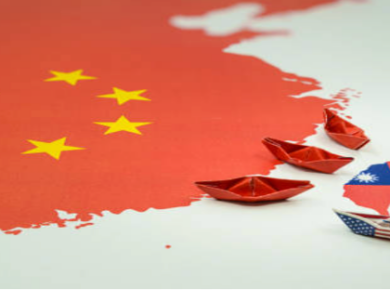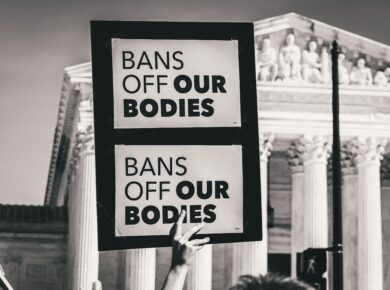 Source: Kiara Worth
Source: Kiara Worth
Disclaimer: This blog post solely reflects the opinion of the authors and should not be taken to represent the general views of IPPR’s management team or those of fellow authors.
Spanning more than two and a half weeks and ultimately being the longest United Nations climate change negotiation in history, Madrid hosted the Conference of Parties 25th session (COP25). Originally slated to be hosted in Santiago, the first act of resistance forced its dramatic relocation across the Atlantic. The significance of this resistance ought to be acknowledged, as it was predominately policies of neo-liberalism such as privatization and tax liberalization that made Chile one of the most economically unequal countries in the region. This resulted in lacks of access to housing, water, healthcare, and the straw that broke the camel’s back, transportation. The continued (and continuing) uprising in Chile explicitly centered that this is a collective movement understanding how seemingly disparate strands – ranging from Mapuche Indigenous sovereignty to copper mining to police brutality – are connected to the climate crisis as well as the economic and political structures of the country at the center of these international negotiations.
To many, however, the event itself is still a largely unknown and vague process. The official United Nations body which has the international effort to combat climate change as its mandate is the United Nations Framework of the Convention on Climate Change (UNFCCC). This is the organization that oversees the Paris Agreement – the international agreement between almost all countries in the world (UNFCCC uses the term parties for certain states with limited recognition are a party to the UNFCCC, such as Palestine). The Paris Agreement aims to resolve the global climate crisis and keep global warming below 2 degrees Celsius with the aim to remain below 1.5 degree Celsius warming. Although the Paris Agreement is a finished document, its implementation before its entry in 2020 remains a puzzle. The recent COPs after Paris were tasked with resolving those issues – COP25 being expected to resolve the final paragraph. Without going into too much depth about the technical nature of the Paris Agreement, article 6 is the controversial article delineating market and non-market approaches to climate change. Ultimately countries could not decide on appropriate mechanisms for this article, and pushed these discussions to the next session. This is why many news outlets marked the COP as a failure.
There is also a specific place for civil society at these negotiations, which is how I was able to be present at the conference halls in Madrid. Members of civil society can sometimes observe negotiations, but mostly try to speak with negotiators outside, organize side-events, or connect with one another. Resistance as a method to push back against climate change inaction also occurs largely within this community of civil society members (although it is important to stress that certain states such as Costa Rica and Tuvalu can be understood as engaging in resistance by being negotiators explicitly speaking out against the status quo a majority of states want to keep largely intact). As in all United Nations negotiation spaces, conduct of civil society groups is monitored and controlled, yet resistance to the hegemonic systems causing climate change remains. I argue this specifically occurs in three distinct ways: direct action, community building, and knowledge sharing.
Direct action occurs in two ways. The first is outside the conference halls, where large-scale protests such as the December 6th march in Madrid, are a powerful reminder to negotiators inside about the popular unrest people around the world currently engage in in response to the climate crisis, which in younger generations is listed as the main concern of our time. The second way is through staging protests inside, which can happen either through UN-approved specific times and places or via unpermitted action. A permitted action is the “Fossil of the Day” award run by Climate Action International, where at the end of each negotiation day for several COPs now the negotiating party being most obstructive receives recognition. The unauthorized route has no historical precedent in COP history, but in Madrid a protest led by Indigenous peoples right outside the main negotiation hall aimed to express the widespread frustration felt by what by many was perceived as inaction while the climate crisis is worsening each day. The response to this protest was, for UN negotiation standards, violent. People were pushed out, receiving kicks and punches. The parallels between the response of the Chilean COP presidency to this minor and peaceful protests to the situation within Chile itself was quickly made.
Community building is the second route of resistance to discuss. This most often translates to community building between civil society attenders of the conference, with a particularly powerful example being how Indigenous youth from across Aotearoa/New Zealand, the Pacific, Indonesia, Brazil, North America, and North Scandinavia connected, co-hosted, and collaborated. Other connections are made between members of civil society and negotiators, to urge, influence, convince, or support negotiation processes. This understands specific types of lobbying as a specific tool within a larger toolbox of resistance to ensure appropriate responses to the climate crisis. The removal from human rights including Indigenous rights, environmental integrity, and a just transition from article 6 drafts, these conversations focused on supporting parties to hold their ground. This is part of what resulted in the so-called failure, yet as a majority of civil society members believed, no deal is better than a bad deal.
The final mode of resistance I observed was that of knowledge-sharing, which was woven throughout the two previously mentioned methods, but also present in the explicit events organized to share findings, solutions, and ideas. Many of these occurred through structured and permitted side-events and stalls. Others were hosted by the myriad of pavilions organized by state parties and other organizations such as the Intergovernmental Panel on Climate Change. Lastly, informal events outside the conference halls and spontaneous meetings between organizations and groups also contributed to spaces of knowledge-sharing both inclusive and exclusive of state parties.
These three distinct methods were all differently and sometimes simultaneously employed by the different actors present. These approaches of direct action, community building, and knowledge sharing politicize international negotiation spaces beyond the expected and legislated format. They indicate that knowledge production and action occur in a multitude of ways and raises the important reality that COPs serve a multi-purpose goal, whether intentional or not. It also means that COPs facilitate processes of resistance, sometimes to COPs itself, which also indicate a necessary plurality of civil society action in response to the climate crisis.
Detmer Kremer
Former IPPR Head of Editorial






